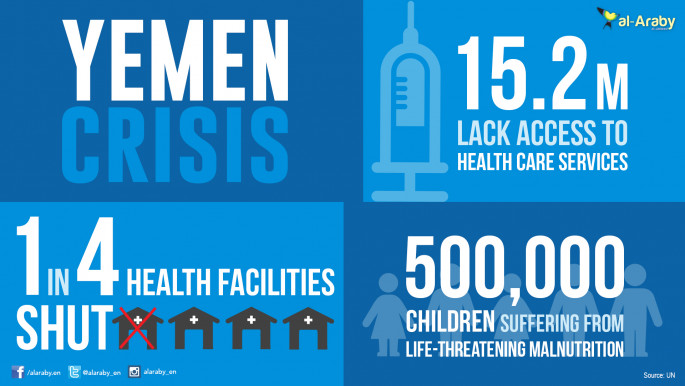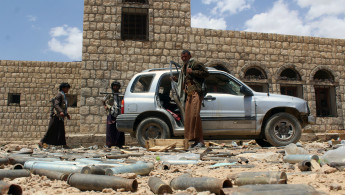Clashes continue in Yemen despite ceasefire
The fragile truce had come into effect Sunday midnight (21:00 GMT on Sunday) to help pave way for peace talks set for Kuwait later this month.
Houthi rebels, pro-government forces and Saudi-led coalition all promised to abide by the ceasefire but sporadic fighting continued.
But a rebel sniper shot and killed the commander of a pro-government army brigade, Major General Zaid al-Huri, in the northeast of the central Sanaa province, a source told AFP.
Rebels fired a mortar round in the same area, wounding six loyalist soldiers, the source added.
In Marib province to the east, two pro-government fighters were killed and seven wounded in several hours of overnight clashes with rebels on Tuesday, loyalist officer Major Abdullah Hasan said.
At least one rebel was killed and several wounded and captured during the fighting, Hasan added.
The country's warring sides have traded accusations of jeopardising the ceasefire ahead of the talks due in Kuwait from Monday.
 |
| [Click here to enlarge] |
In a statement, a Houthi military official accused loyalist forces, including the Saudi-led coalition, of "violating the ceasefire" on Tuesday in Marib, Jawf in the north, and Taiz in the southwest.
At least 117 ceasefire violations by the rebels were recorded in seven provinces on Monday, according to a statement issued by Yemeni authorities.
The Saudi-led coalition, which launched a military campaign against the rebels last year, had described violations on Monday as "minor".
Yemeni Foreign Minister Abdulmalek al-Mikhlafi confirmed that the government will attend the peace talks in Kuwait, while criticising "Iranian interference in Yemen and its attempt to extend the conflict by sending arms" to rebels.
Saudi Arabia and its Arab allies are backing the Yemeni government in the conflict while Iran supports the rebels who have seized the capital Sanaa and other parts of the country.
The war has left more than 6,300 people dead since March 2015 and worsened living conditions, with more than 80 percent of the population now on the brink of famine.
Agencies contributed to this report





 Follow the Middle East's top stories in English at The New Arab on Google News
Follow the Middle East's top stories in English at The New Arab on Google News
![Israeli forces ordered bombed Gaza's Jabalia, ordering residents to leave [Getty]](/sites/default/files/styles/image_330x185/public/2176418030.jpeg?h=a5f2f23a&itok=_YGZaP1z)

